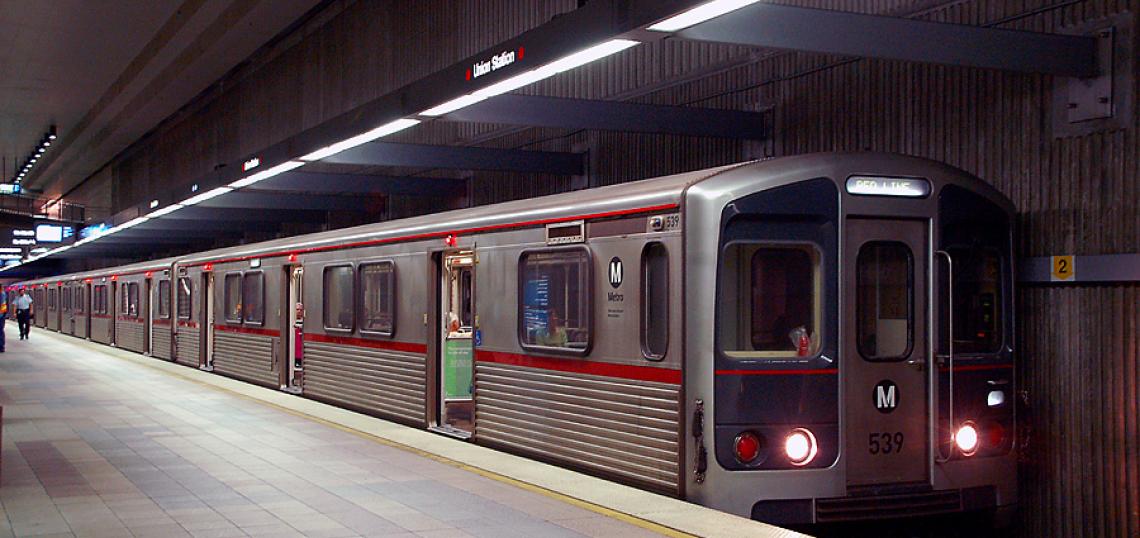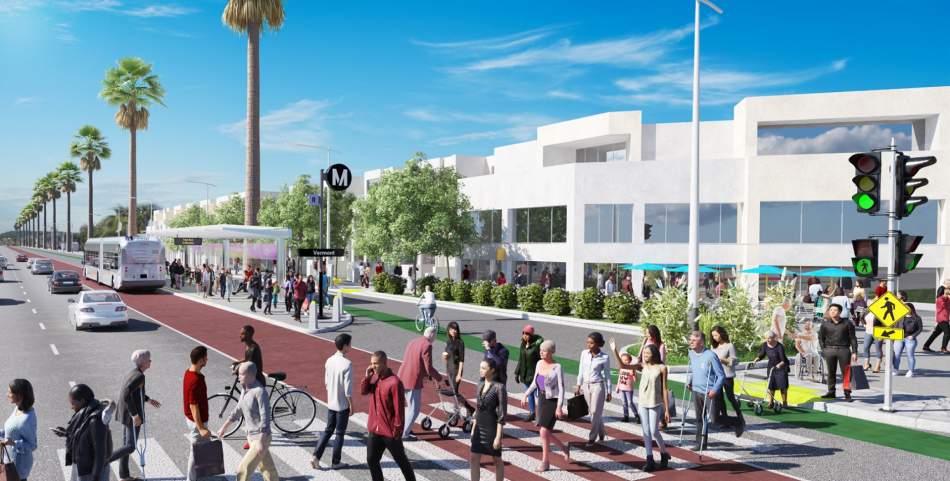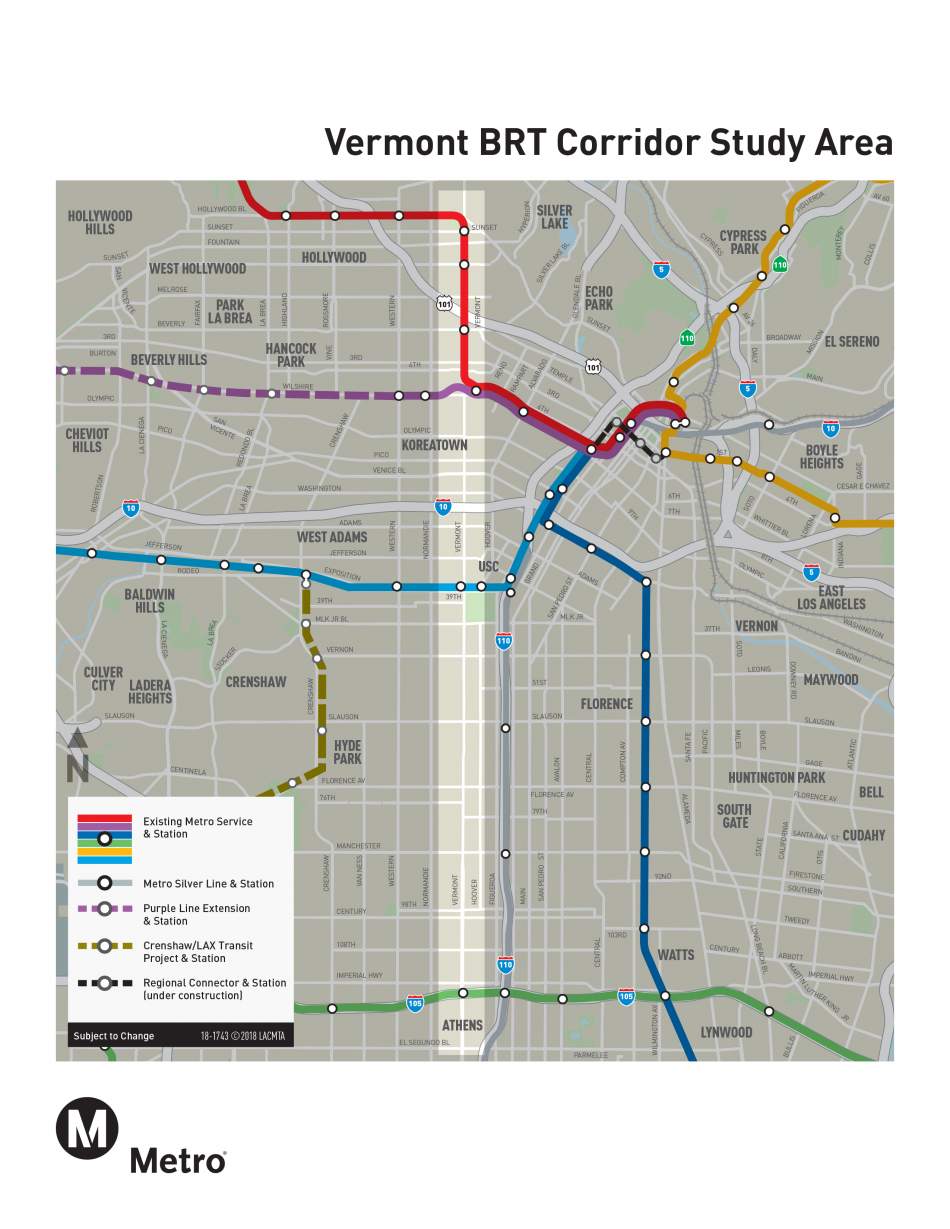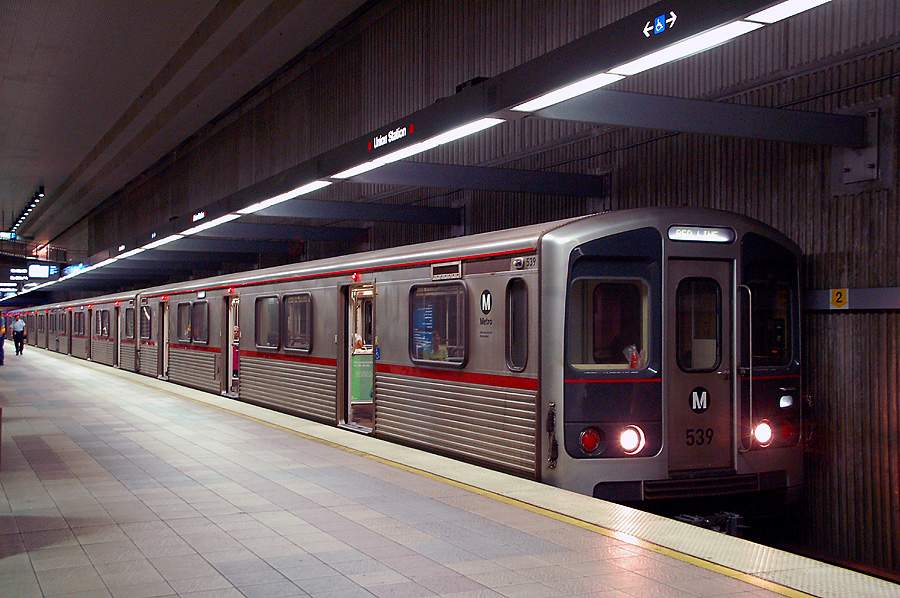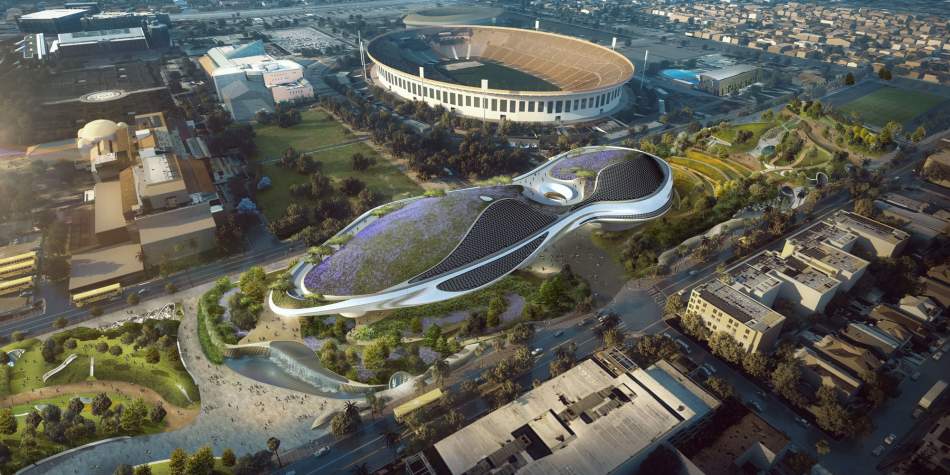At its meeting today, Metro's Board of Directors advanced the study of a $425-million bus rapid transit line planned for Vermont Avenue, while also laying the groundwork to eventually extend rail service along the corridor.
In a 9-1 vote, the Board approved a motion from Directors Eric Garcetti, Jackie Dupont-Walker, Janice Hahn, Hilda Solis, and James Butts which instructs Metro staff to study rail concepts - including light rail and subway - as part of the bus project's environmental review. The motion also calls for a feasibility study of extending the Vermont Transit Corridor as far south as the Silver Line's Pacific Coast Highway Station in Harbor City (including the identification of potential sites for a maintenance facility) and requests a report on the possibility of accelerating construction through public-private partnerships.
The authors of the motion have envisioned a Vermont Avenue rail line that is far more expansive than previous concepts studied by Metro. While an alternatives analysis has considered a rail line between Wilshire/Vermont Station in Koreatown and the Green Line in West Athens - a span of approximately 9.5 miles - the current proposal would nearly double that distance.
With approximately 40,000 trips each weekday, Vermont ranks as Metro's most successful bus corridor, and is expected to attract more than 70,000 weekday passengers when upgraded to bus rapid transit. Accordingly, the previously-studied rail concepts between Koreatown and West Athens have also performed well in terms of ridership, with forecasts ranging between 91,000 and 144,000 daily passengers.
An extension south past the Green Line would likely add to those riderhsip totals, but also to the project's overall price tag. Metro's previous cost estimates have ranged between $4.4 billion and $8.4 billion based on current conditions.
According to the motion, Vermont was historically considered the second priority for rail transit in Los Angeles County following Wilshire Boulevard, as evidenced by the existing Vermont Subway between Wilshire and Hollywood Boulevard. The corridor's importance has grown in recent years, due in part to the growth of USC - one of the County's largest employers - and the establishment of new venues at Exposition Park. Garcetti, speaking on the proposed rail line, noted that over $2 billion has been invested into Exposition Park within the past five years. The under-construction Lucas Museum of Narrative Arts alone is expected to draw one million annual visitors upon opening, adding to the four million people who already visit the park each year.
Though funding for a Vermont rail line has not been identified, the motion's authors note that there is precedent for a project originating as a bus corridor before being built as rail. Both the Expo Line and the Crenshaw/LAX Line included both bus rapid transit and rail alternatives during their environmental review periods.
Garcetti, who acknowledged the current lack of funding at the Board meeting, noted that Metro has already been approached regarding a public-private partnership for the Vermont bus rapid transit line, and expressed interest in seeing what interest private sector entities might have in a rail line. Currently, a conversion to rail is not expected to occur until 2067 at the earliest.
However, one board member was less enthusiastic about the concept. Director John Fasana, Mayor of the City of Duarte, argued in favor of maintaining a short-term focus on bus rapid transit, noting that past environmental reviews conducted too far in advance of a project's construction have required supplemental studies. He cast the sole "no" vote on the motion.
Questions also linger regarding the site of a maintenance facility for a rail line. While Metro has considered a short initial operating segment between Wilshire Boulevard and Exposition Park, the surrounding area is among the most densely populated in Los Angeles County and offers no viable location for vehicle storage. A staff presentation pointed to a corridor of industrial-zoned land paralleling Slauson Avenue as one option. There are also several tracts of industrial land in the Harbor Gateway area south of the the Green Line.
- Vermont BRT (Urbanize LA)




